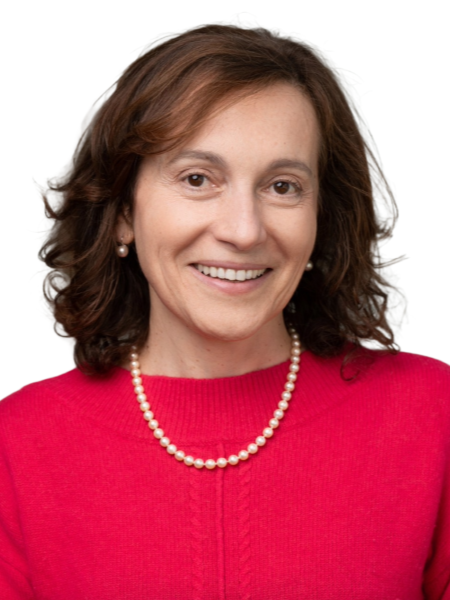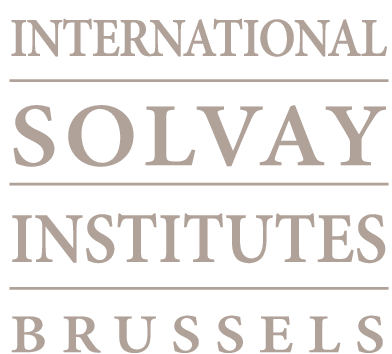
2025 Syensqo Chairs in Chemistry by the International Solvay Institutes
Laura Gagliardi
University of Chicago, United States of America
Biography
Laura Gagliardi received her undergraduate degree and PhD degree in theoretical chemistry from the University of Bologna in 1997, and then spent two years at Cambridge University, in England, as a postdoctoral scholar. She began her independent academic career as an assistant professor at the University of Palermo, Italy, moving in 2005 to take an appointment as associate professor at the University of Geneva, in Switzerland. In 2009, she moved to the United States where she was a professor at the University of Minnesota. She remained there until her move to the University of Chicago in 2020. Professor Gagliardi She is the Richard and Kathy Leventhal Professor at the University of Chicago with a joint appointment at the Department of Chemistry and the Pritzker School of Molecular Engineering. She also serves as the Director for the Chicago Center for Theoretical Chemistry. She has received many recognitions, including the Peter Debye Award in Physical Chemistry from the American Chemical Society in 2020; the Award in Theoretical Chemistry from the Physical Chemistry Division of the American Chemical Society in 2019, the Humboldt research award in 2018; and the Bourke Award of the Royal Society of Chemistry in 2016. Laura is an Elected Member of the American Academy of Arts and Sciences (2020), the International Academy of Quantum Molecular Science (2019) and Academia Europaea (2018). She also serves as an Associate Editor for the Journal of the American Chemical Society. In addition to her dedication to science, Laura is a strong advocate for women in science, technology, engineering, and mathematics.
Inaugural Lecture
Theory, Computation and Machine Intelligence for Reticular Chemistry
Solvay Room on January 28th at 4:00 PM
I will describe the synergies of theory, computation, and machine intelligence to expedite the discovery of innovative reticular materials, with a particular focus on their application in catalysis and water harvesting.
I will first discuss our current endeavors in understanding and optimizing the water-harvesting potential of metal-organic frameworks (MOFs) and covalent organic frameworks (COFs) by the elucidation of the water-filling mechanism. [1], [2]
I will then present a comprehensive computational and data-driven investigation, complemented by experimental work, focusing on sulfur-based MOFs for electrocatalytic transformations relevant to hydrogenation and CO2 reduction.[3] The computational insights have played a pivotal role in guiding the synthesis of novel MOFs. Initiating our study with previously reported Fe4S4 chain coordination polymers, we systematically explore the influence of alternative linkers and counter-cations on the material’s structure. This investigation aims to tailor these materials into porous 2D or 3D frameworks. Notably, our efforts have resulted in the development of a computational workflow for MOF and COF structure prediction.[4]
[1] N. Hanikel, D. Kurandina, S. Chheda, Z. Zheng, Z. Rong, S. E. Neumann, J. Sauer, J. I. Siepmann, L. Gagliardi, and O. M. Yaghi, MOF Linker Extension Strategy for Enhanced Atmospheric Water Harvesting, ACS Central Science., 2023, 9, 551–557, DOI: 10.1021/acscentsci.3c00018.
[2] D. Kurandina, B. Huang, W. Xu, N. Hanikel, A. Darù, G.D. Stroscio, K. Wang, L. Gagliardi, F.D. Toste, O.M. Yaghi, A Porous Crystalline Nitrone-Linked Covalent Organic Framework A. C. Int. Ed. 2023, 62, e202307674 DOI: 10.1002/anie.202307674
[3] N. Jiang, A. Darù, Š. Kunstelj, J. G. Vitillo, M.E. Czaikowski, A. Wuttig, L. Gagliardi, J.S. Anderson. Catalytic, Spectroscopic, and Theoretical Studies of Fe4S4-Based Coordination Polymers as Heterogenous CPET Mediators for Electrocatalysis J. Am. Chem. Soc., 2024, 146, 12243–12252. DOI: 10.1021/jacs.4c03726
[4] A. Darù, J. Anderson, D. Proserpio, and L. Gagliardi, Symmetry is the Key to the Design of Reticular Frameworks, ChemRxiv, 2024. DOI: 10.26434/chemrxiv-2024-37wks
COFFEE AND TEA WILL BE SERVED AT 3:45 P.M AND DRINKS AT 5:00 P.M. IN FRONT OF THE SOLVAY ROOM
2nd Lecture
A Journey with Strong Electron Correlation
Solvay Room on February 18th at 4:00 PM
[1] M. R. Hermes, R. Pandharkar. L. Gagliardi, Variational Localized Active Space Self-Consistent Field Method, J. Chem. Theory Comput. 2020, 16, 4923–4937.
[2] V. Agarawal, D. S. King, M. R. Hermes, L. Gagliardi, Automatic State Interaction with Large Localized Active Spaces for Multimetallic Systems, J. Chem. Theory Comput., 2024, 20, 4654-4662.
[3] M. Hennefarth, M. Hermes, D. Truhlar, L. Gagliardi, Linearized Pair-Density Functional Theory, J. Chem. Theory Comput., 2023, 19, 3172–3183.
[4] J. Bao, D. Zhang, S. Zhang, L. Gagliardi, D. Truhlar, A Hybrid Meta On-Top Functional for Multiconfiguration Pair-Density Functional Theory, PNAS, 2025, 122,. e2419413121.
3rd Lecture
Multireference Electronic Structure and Machine Learning for Reactivity and Excited States
Solvay Room on September 2nd at 4:00 PM
Multireference electronic structure methods are indispensable for accurately describing systems with strong multiconfigurational character, yet their high computational cost and reliance on manual active-space selection limit widespread application. These constraints preclude black-box usage and the creation of large, systematic datasets. To address these challenges, we have developed automated multireference workflows to generate extensive datasets for excitation energies[1] and reactivity[2].
To extend these methods to reactive dynamics, we constructed machine learning potentials (MLPs) trained on multireference data. A key difficulty is the sensitivity of multireference results to active-space choices across diverse geometries. We resolved this by introducing the weighted active space protocol (WASP)[3], a systematic strategy for consistent active-space assignment across nuclear ensembles. Integrating WASP with MLPs and enhanced sampling yields a data-efficient active learning framework that produces robust, multireference-quality MLPs. We demonstrate this approach on TiC⁺-catalyzed methane C–H activation, a reaction inaccessible to conventional density functional theory due to its strong multireference character.
[1] J. J. Wardzala, D. S. King, and L. Gagliardi, J. Phys. Chem. A, 2025, 129, 2683–2691.
[2] J. J. Wardzala, D.S. King, L. Ogunfowora, B. Savoie, and L. Gagliardi, ACS Cent. Sci, 2024, 10, 833–841.
[3] A. Seal, S. Perego, M. R. Hennefarth, U. Raucci, L. Bonati, M. Parrinello, L. Gagliardi 2025 https://doi.org/10.48550/arXiv.2505.10505.
4th Lecture
Reticular frameworks after the Nobel prize: their application for catalysis and CO2 capture
ULB Plaine Forum D - October 21st at 04:00 pm
Following reflection on the 2025 Nobel Prize in Chemistry awarded for advances in metal–organic frameworks (MOFs), this lecture explores how state-of-the-art quantum chemical and classical simulations are driving the discovery of reticular materials. Computation today is not only a tool to rationalize experiments, but increasingly a predictive engine for tailoring functional frameworks.
In the first part of the presentation, I will highlight our integrated computational and experimental study of catalytic MOFs, where post-synthetic modification introduced metal–sulfur active sites [1]. Quantum chemical calculations elucidated how sulfur incorporation modulates the electronic structure and catalytic reactivity of the frameworks. These insights provided a mechanistic understanding of hydrogenation catalysis and guided the design of MOFs with tunable properties.
The second part will focus on covalent organic frameworks (COFs). Thanks to their modular architectures and tunable functionalities, COFs offer a highly versatile platform for CO2 direct air capture. We performed a multiscale investigation of COF-999 and its amine-functionalized precursor COF-999-NH₂, integrating density functional theory, molecular dynamics, and grand canonical Monte Carlo simulations with experimental validation [2]. Our findings highlight subtle energy differences in laterally shifted stackings, intrinsic stacking heterogeneity, and pronounced layer buckling. We found that extensive amine–nitrile hydrogen bonding and persistent pore water lead to undesired polymerization that undermines CO2 uptake. The predicted presence of water is confirmed by subsequent experiments. These insights point to a single, actionable design rule:exclude retained water by introducing hydrophobic pore environments to maximize CO2 capture efficiency.
[1] H. Xie, M. A. Khoshooei, M. Mandal, S. M. Vornholt, J. Hofmann, L. M. Tufaro, K. O. Kirlikovali, D. A. Grimes, S. Lee, S. Su, S. Reischauer, D. Sengupta, K. Fahy, K. Ma, X. Wang, F. Sha, W. Gong, Y. Che, J. G. Vitillo, J. S. Anderson, J. M. Notestein, K. W. Chapman, L. Gagliardi, and O. K. Farha, Introducing Metal–Sulfur Active Sites in Metal–Organic Frameworks Via Post-Synthetic Modification for Hydrogenation Catalysis, Nature Chemistry, 2025. DOI:10.1038/s41557-025-01876-y
[2] H. Daglar, Z. Zhou, R. Zhu, P. Parihar, J. I. Siepmann, O. M. Yaghi, L. Gagliardi Discovery of Stacking Heterogeneity, Layer Buckling, and Residual Water in COF-999-NH₂ and Implications on CO2 Capture Submitted (2025)
Other Lectures and visits
January 29th
VUB
February 19th
UMONS
February 20th
Syensqo
February 21st
UGent
September 3rd
Eindhoven
October 22nd
UNamur
October 23rd
ULiège
October 24th
KULeuven
